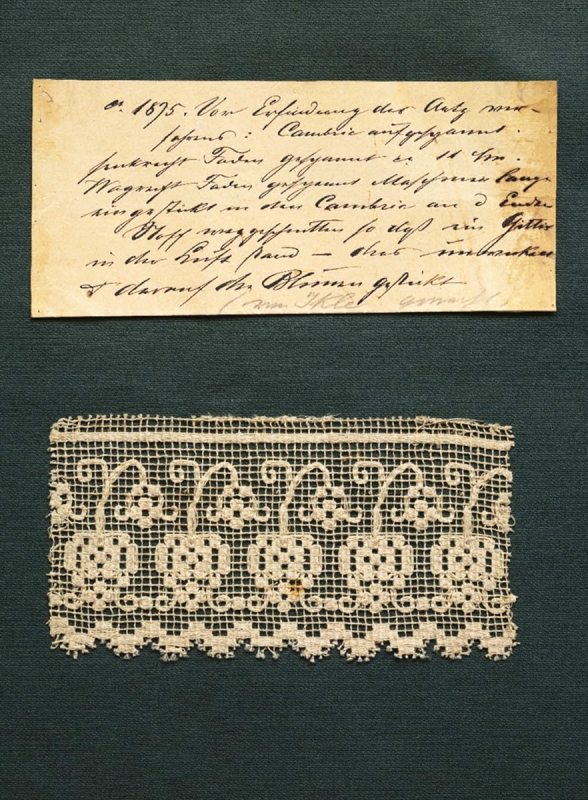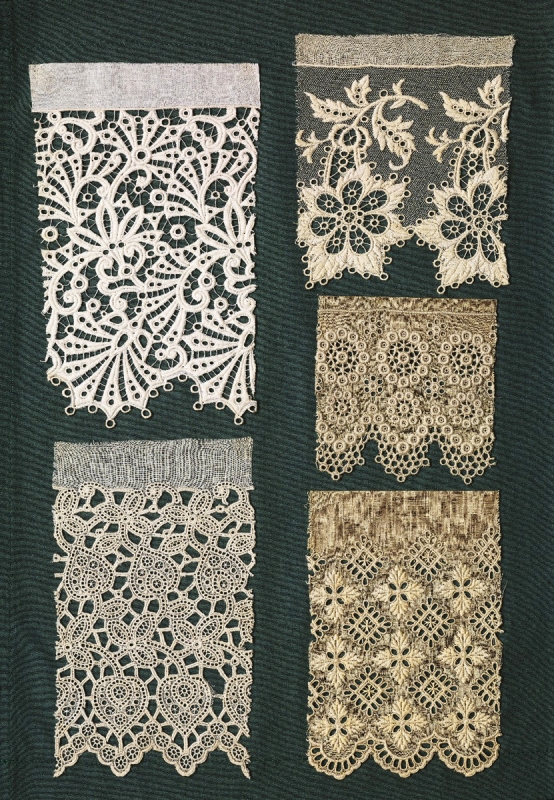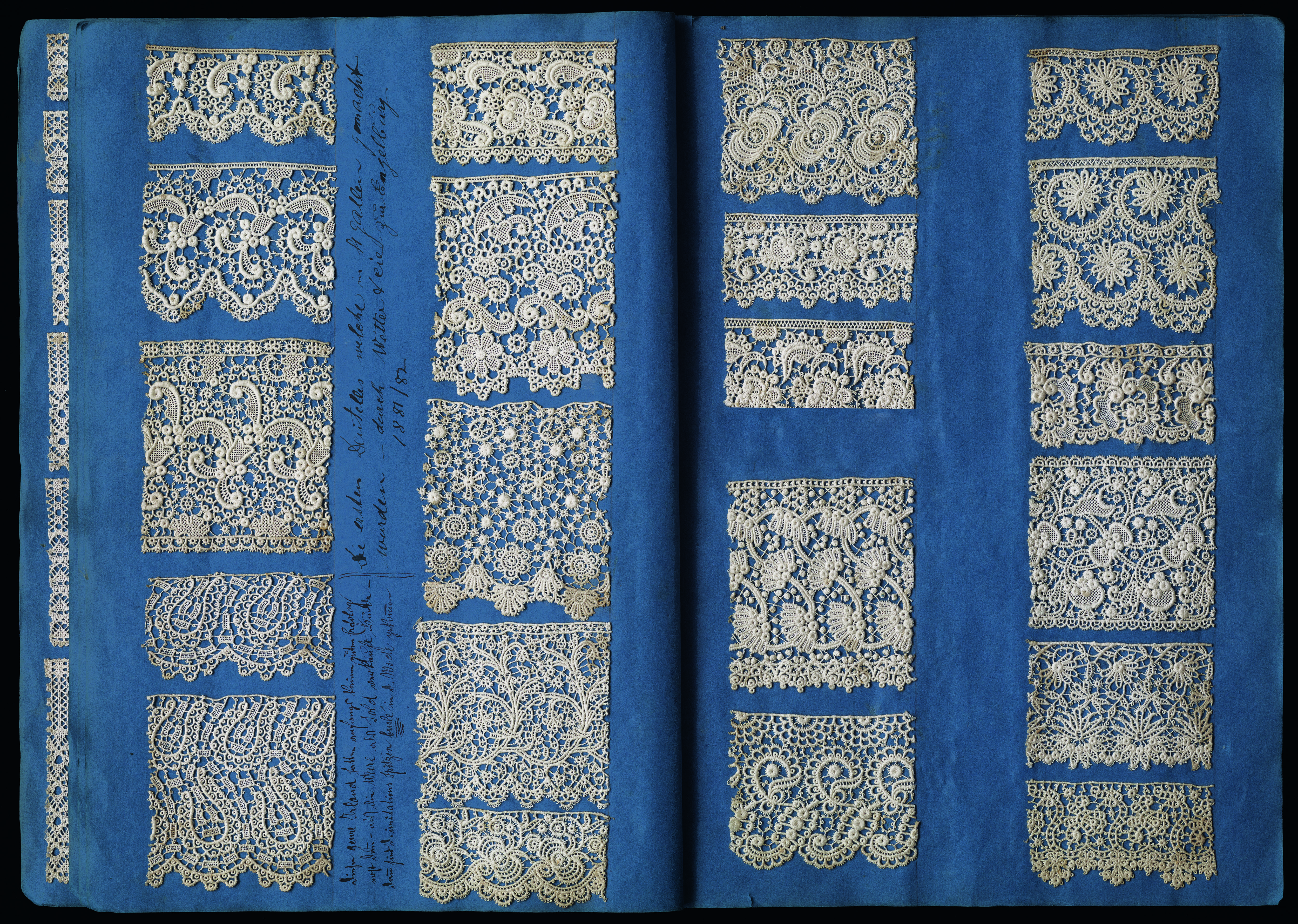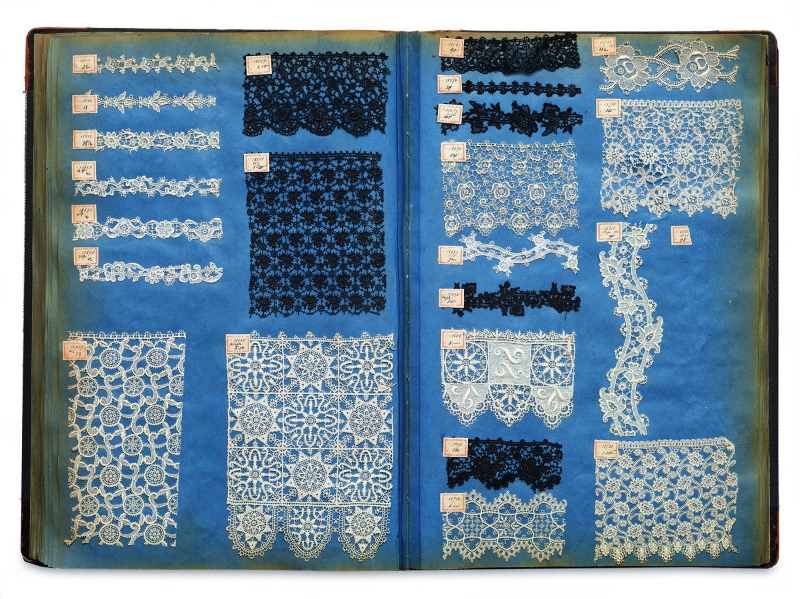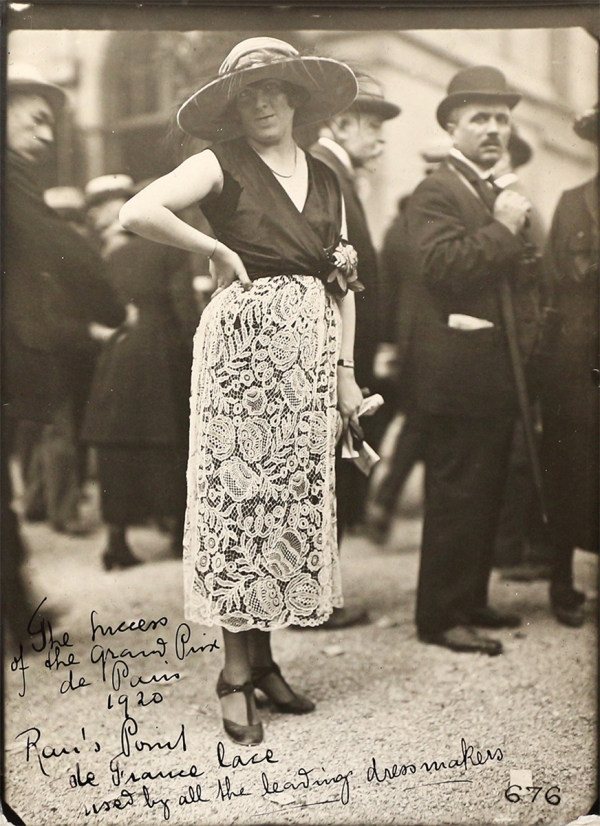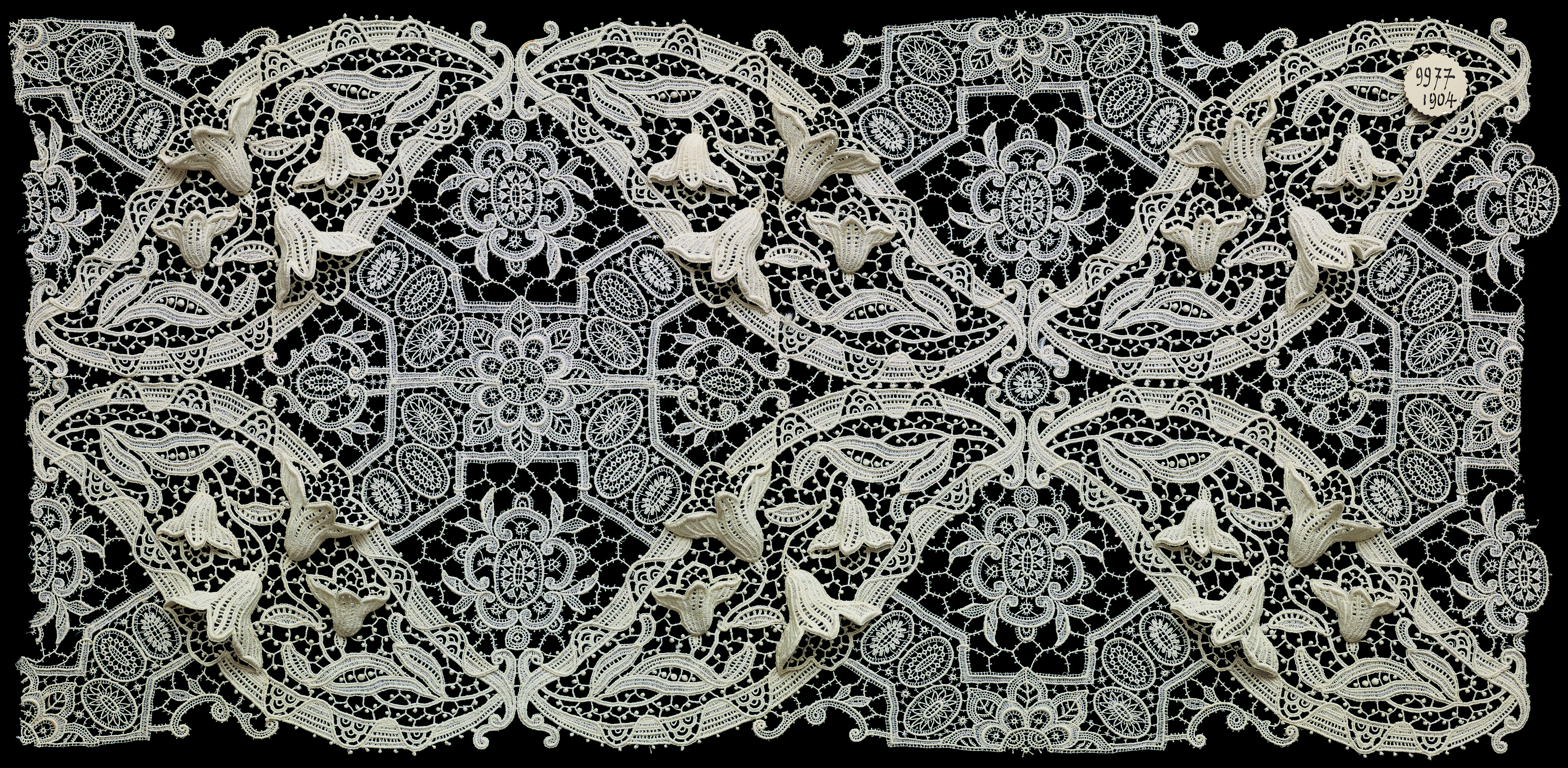Lace and the Embroidery Industry in St. Gallen, ca. 1880–1930
At the beginning of the nineteenth century, the eastern Swiss town of St. Gallen was the trading center for a local rural industry in which many women hand-embroidered cotton fabrics destined primarily for export. By the mid-1840s, hand-embroidery machines enabled the simultaneous production of multiple stitched motifs, greatly increasing output. Within a decade, St. Gallen was exporting large quantities of machine embroidery throughout Europe and, after the end of the American Civil War, to the United States.
ca. 1875
Cotton and ink on paper
Textilmuseum St. Gallen, Gift of Ernst Iklé, 1930, 30743
Photo: Michael Rast
ca. 1878
Cotton
Textilmuseum St. Gallen, Gift of Ernst Iklé, 1930, 30750
Photo: Michael Rast
Click Images to Enlarge
Click Images to Enlarge
ca. 1875
Cotton and ink on paper
Textilmuseum St. Gallen, Gift of Ernst Iklé, 1930, 30743
Photo: Michael Rast
ca. 1878
Cotton
Textilmuseum St. Gallen, Gift of Ernst Iklé, 1930, 30750
Photo: Michael Rast
The first machine-made goods were simple white embroideries with small patterns used for lingerie and household linens. By the 1870s, more complex designs and openwork textiles were available. Then, at the beginning of the 1880s, the first “chemical lace” appeared on the European market. This technique involved using a chemical bath to dissolve the base fabric following the execution of a machine-embroidered pattern, resulting in a lacelike textile that successfully imitated handmade lace.
St. Gallen, Switzerland
1881–82
Cardboard, paper, and cotton
Bischoff Textil AG, Hufenus Collection
Photo: Michael Rast
Thanks to these technological advancements, the embroidery and lace industries in the area expanded significantly. Manufacturers in eastern Switzerland competed with similar companies in the nearby region of Vorarlberg, Austria, and in Plauen, Germany, but by 1910, St. Gallen was the world leader for machine-embroidered products.
Chemical Lace in Fashion
In the late nineteenth and early twentieth centuries, Paris couturiers began purchasing the sophisticated chemical laces produced in St. Gallen and incorporating them into their creations. Other European and American fashion designers quickly followed suit. To meet growing demand, St. Gallen embroidery manufacturers regularly debuted new patterns for fashionable dress, experimenting with materials and colors and drawing inspiration from contemporary stylistic influences such as Art Nouveau and Japonisme.
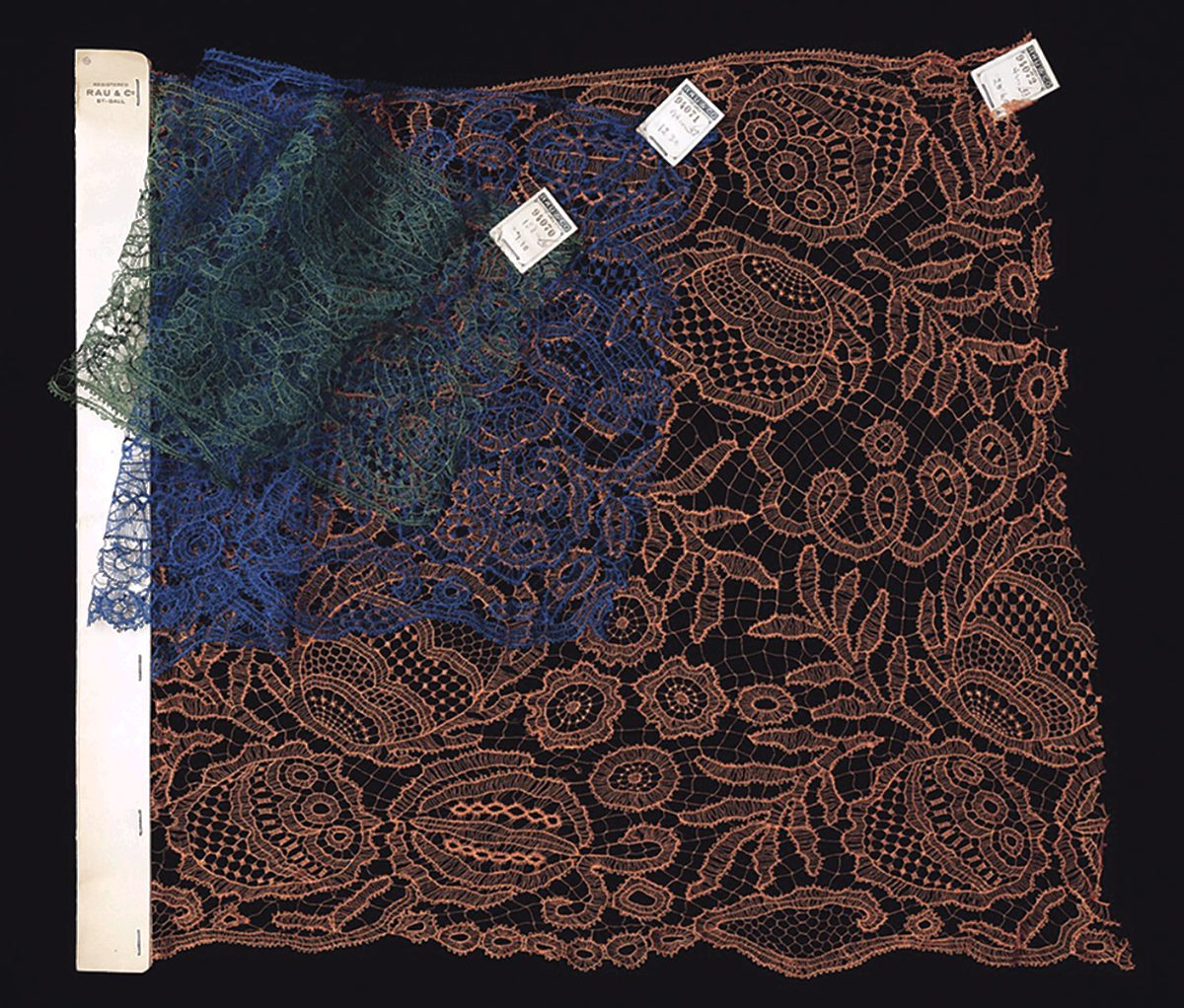
St. Gallen, Switzerland
ca. 1920
Cotton
Textilmuseum St. Gallen, 55035
Photo: Michael Rast
Prestigious events and venues like the racetrack provided the perfect opportunity for elegant society women and fashion house models to showcase the latest trends. Photographs and illustrations in fashion magazines then spread these modes to a wider female audience. Prior to World War I, dresses, undergarments, and accessories were all richly embellished with lace and embroidery. This decorative extravagance gave way to more practical clothing when consumer desire for luxuries decreased due to the war, and the machine embroidery industry in St. Gallen experienced a severe crisis. Thousands of embroidery machines were scrapped as manufacturers pivoted to focus on other facets of textile production or gave up the textile business altogether.
St. Gallen, Switzerland
ca. 1920
Cotton
Textilmuseum St. Gallen, 55035
Photo: Michael Rast
Click Image to Enlarge
1920
Photograph with inscription in ink
Textilmuseum St. Gallen, 55440
Photo: Michael Rast
St. Gallen, Switzerland
1904
Cotton
Textilmuseum St. Gallen, Acquired from Otto Alder, 1931, 30128
Photo: Michael Rast

